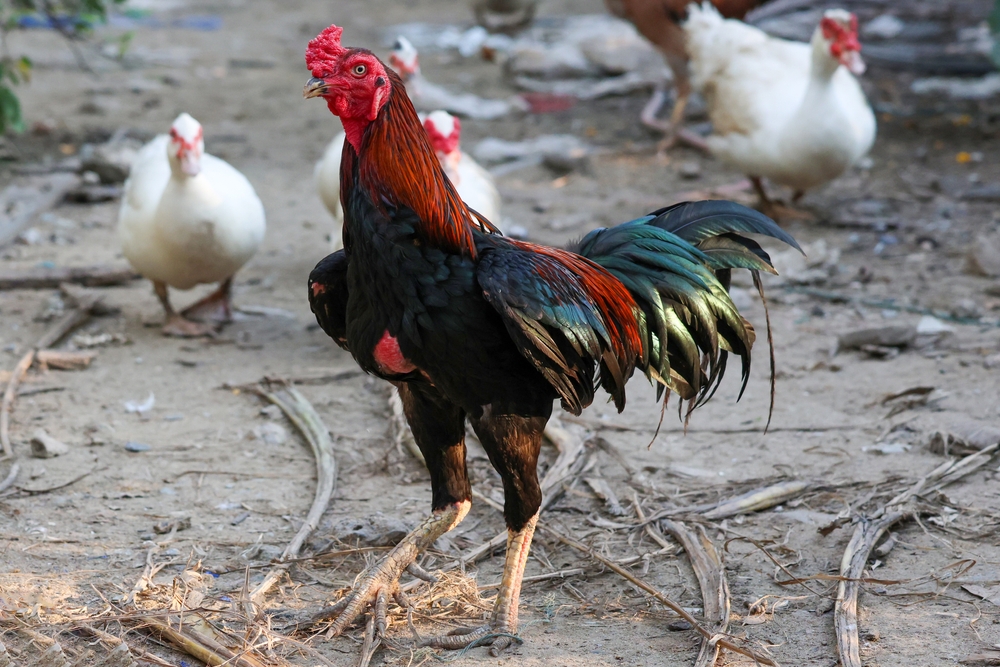As we stand on the brink of an AI revolution, it’s fascinating to explore how these technologies might transform our interactions with animals. Artificial intelligence isn’t just changing industries or the way we perform daily tasks—it’s also reshaping our understanding and relationship with the animal kingdom. From enhancing communication to improving welfare, AI offers countless possibilities for deepening our bond with the creatures that share our world. Let’s dive into some exciting ways AI is paving the path toward a new era of human-animal interaction.
1. Decoding Animal Communication

One of the most groundbreaking ways AI could transform our relationship with animals is by helping us decode their languages. Imagine understanding the specific calls of a dolphin or interpreting the subtle signals of a cat. Hiraku says that AI algorithms are making strides in analyzing and translating these complex communication systems. By doing so, they could help bridge the gap between humans and animals, fostering greater empathy and understanding. This newfound ability to “talk” to animals could revolutionize the way we care for and interact with them.
Moreover, it opens up possibilities for conflict resolution between humans and animals. Consider a farmer who can accurately interpret the needs and stress signals of livestock, potentially increasing welfare standards. In wildlife conservation, understanding communication could help in protecting endangered species by anticipating their needs more effectively. For pet owners, this means a closer and more intuitive relationship with their furry friends. AI-powered communication tools could fundamentally alter the way we perceive and coexist with animals.
2. Enhancing Animal Welfare

AI technology offers promising solutions for enhancing animal welfare across various settings. In farms, AI systems could monitor livestock health and detect signs of illness or stress early, ensuring timely intervention. This proactive approach could lead to healthier animals and more ethical farming practices. Similarly, zoos and aquariums might employ AI to create enriched environments that simulate animals’ natural habitats, promoting mental and physical well-being. In shelter settings, AI could help assess behavioral issues in animals, allowing for better rehabilitation and adoption processes.
Wildlife conservation efforts might also benefit from AI tools monitoring animal populations and their habitats. AI-driven drones or sensors could track wildlife movements, identifying threats like poaching or habitat destruction. By providing real-time data, these technologies enable more effective conservation strategies. Additionally, AI could assist veterinarians with diagnostics, ensuring animals receive appropriate care faster. Ultimately, AI can play a pivotal role in advocating for and maintaining high standards of animal welfare.
3. Revolutionizing Veterinary Medicine

AI has the potential to significantly transform veterinary medicine, making it more precise and efficient. Advanced AI systems can analyze vast amounts of medical data to aid in diagnosing animal diseases, potentially predicting illnesses before they become critical. This timely diagnosis can lead to better treatment plans and outcomes for pets and wildlife alike. In surgery, robotic assistance guided by AI can perform complex procedures with heightened accuracy, reducing recovery times. Furthermore, AI could streamline administrative tasks in veterinary practices, allowing vets to focus more on patient care.
Telemedicine platforms powered by AI could also change how pet owners access veterinary advice. By analyzing symptoms and medical history, these platforms could offer preliminary diagnoses or recommendations, saving time and stress for both pets and their owners. Moreover, AI could customize wellness plans tailored to each animal’s unique needs, promoting long-term health. This personalized approach ensures pets receive the best care possible throughout their lives. As AI continues to evolve, it promises to bring countless innovations to veterinary medicine.
4. Refining Wildlife Conservation

AI is poised to refine wildlife conservation efforts by providing powerful tools for monitoring and protecting ecosystems. Machine learning algorithms can analyze data from cameras, satellites, and other sensors to track animal populations and movements. According to the World Enconomic Forum, this information is crucial for understanding the status of endangered species and their habitats. By predicting migration patterns and identifying new threats, AI helps conservationists make informed decisions. Drones equipped with AI can patrol protected areas, offering real-time surveillance against poaching and illegal activities.
In addition, AI can optimize land use management, ensuring that conservation areas support biodiversity effectively. By modeling various scenarios, AI can suggest strategies for mitigating human-wildlife conflicts. This technology could also facilitate cross-border conservation efforts by sharing data and insights internationally. AI-driven data analysis can support rewilding projects, identifying the most effective ways to restore habitats. Through these applications, AI enhances our ability to protect and preserve wildlife and their environments.
5. Improving Pet Training Techniques

AI is revolutionizing the way people train their pets, offering more effective and individualized methods. Smart devices equipped with AI can monitor pets’ behaviors in real-time, providing feedback and suggestions to owners. For instance, an AI-powered collar might detect barking patterns and suggest specific training interventions. By tailoring training to each animal’s unique behavior and learning style, AI can make training more efficient and enjoyable. These technologies can also track progress over time, adjusting techniques as needed to ensure success.
Additionally, AI can provide insights into animal psychology, helping trainers understand the underlying causes of behavioral issues. This deeper understanding allows for more compassionate and effective training approaches. Online platforms with AI capabilities can offer virtual training sessions, making professional advice more accessible to pet owners. These platforms can also connect pet owners with a network of trainers and behaviorists, fostering a supportive community. With AI, pet training becomes a more precise and rewarding experience for both owners and their furry companions.
6. Facilitating Human-Animal Interaction

AI is opening new avenues for enriching human-animal interactions, making these experiences more rewarding and meaningful. Virtual and augmented reality technologies powered by AI allow people to engage with animals in innovative ways. Imagine a virtual safari where you can observe wildlife in their natural habitat without leaving your home. These experiences can educate and inspire, fostering a deeper appreciation for the animal kingdom. AI can also facilitate interactive experiences in museums and educational centers, providing insights into animal behavior and ecology.
In social settings, AI can enhance therapy programs involving animals. By analyzing interactions, AI could optimize sessions to maximize therapeutic benefits for patients. Companion robots with AI capabilities may even simulate animal behaviors, offering comfort and companionship to those who cannot have live pets. For children, AI-powered educational apps can teach responsibility and empathy through virtual pet care. These technologies expand the potential for human-animal connection, making it more accessible and engaging for all.
7. Innovating Animal-Based Research

AI is set to revolutionize animal-based research, offering tools that make studies more ethical and efficient. Through advanced data analysis, AI can reduce the need for live animal testing by modeling biological processes and predicting outcomes. This approach not only minimizes animal suffering but also speeds up research progress. In the field, AI-driven sensors can collect data on animal behavior and health without intrusive methods. This allows researchers to observe animals in their natural environments with minimal disruption.
Moreover, AI can enhance understanding of complex ecosystems by analyzing interactions between species and their environments. These insights can lead to breakthroughs in ecology and conservation science. Machine learning algorithms can also identify trends and correlations that might be missed by human researchers, leading to new discoveries. By making research more humane and efficient, AI contributes to advancements in science while respecting animal welfare. This transformative potential highlights the importance of integrating AI into animal research methodologies.
8. Boosting Animal-Assisted Therapy

AI has the potential to enhance animal-assisted therapy programs, making them more effective and accessible. By analyzing data from therapy sessions, AI can identify patterns and suggest improvements tailored to individual needs. This personalization increases the therapy’s success rate, benefiting both patients and therapy animals. AI can also streamline administrative processes, allowing therapists to focus more on client interactions. Furthermore, smart devices can monitor the well-being of therapy animals, ensuring they are healthy and stress-free.
Virtual reality experiences powered by AI could simulate therapy sessions, providing support for those who cannot access in-person programs. These virtual sessions can offer comfort and companionship, reducing feelings of isolation. AI can also assist in training therapy animals, ensuring they are well-prepared for their roles. By improving the efficiency and reach of animal-assisted therapy, AI helps more people benefit from these programs. This innovation underscores AI’s potential to positively impact mental health and well-being.
9. Advancing Animal Behavior Studies

AI is advancing the study of animal behavior by offering new tools for observation and analysis. Machine learning algorithms can process large datasets from cameras and sensors, revealing insights into animal behaviors. These insights can improve understanding of species-specific communication, social structures, and environmental interactions. By reducing observation biases, AI provides more accurate and comprehensive data. This leads to more robust conclusions and supports conservation and welfare efforts.
In addition, AI can automate the tedious task of data collection, allowing researchers to focus on analysis and interpretation. This efficiency accelerates the pace of scientific discovery. AI can also predict behavioral changes in response to environmental shifts, aiding in climate change research. Collaboration between AI experts and ethologists can drive innovations in behavioral studies. As AI continues to evolve, it offers exciting possibilities for deepening our understanding of the animal world.
10. Transforming Animal-Based Industries

AI is poised to transform industries that rely on animals, such as agriculture, entertainment, and tourism. In agriculture, AI systems can optimize livestock management, enhancing productivity while promoting animal welfare. By automating routine tasks, these technologies reduce the workload for human workers, making farming more sustainable. In entertainment, AI could create ethical alternatives to using live animals in performances by simulating realistic animal behaviors. This reduces the demand for training and exploiting animals in captivity.
Similarly, AI-driven experiences in tourism, like virtual safaris and wildlife parks, offer ethical alternatives to traditional animal attractions. These experiences provide educational value and excitement without impacting animal well-being. AI can also improve supply chain transparency, ensuring products meet ethical and sustainable standards. By transforming these industries, AI supports a shift toward more humane and environmentally friendly practices. This change reflects a growing recognition of the importance of respecting and preserving the animal kingdom in all its diversity.
